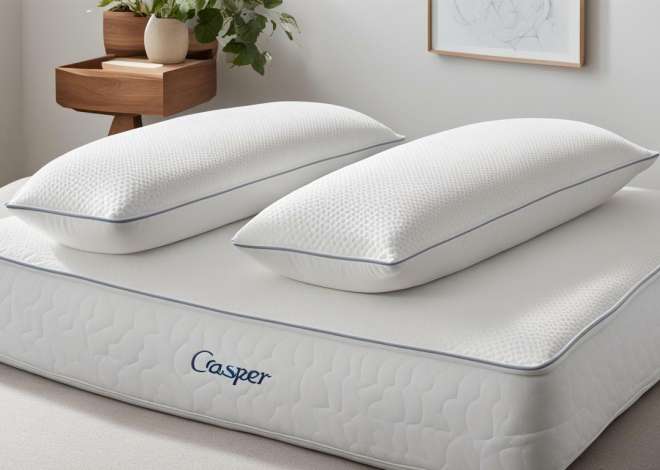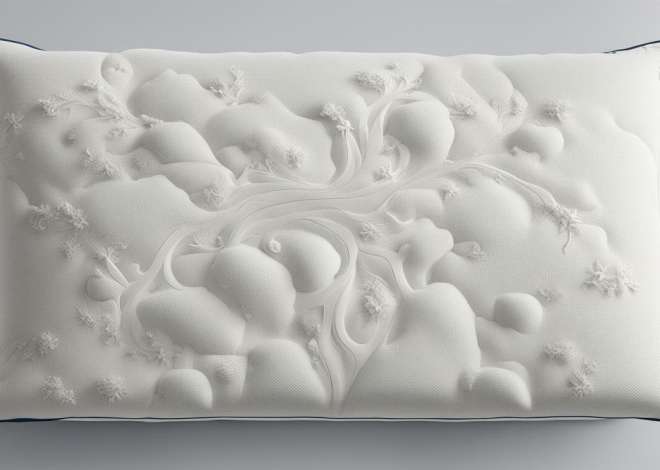
What pillowcase is best to prevent wrinkles?
If you’re concerned about wrinkles on your face, choosing the right pillowcase could make all the difference. Wrinkles may seem like an inevitable part of aging, but there are steps you can take to minimize their appearance. In this article, we’ll dive deep into the science behind wrinkles and how different types of pillowcases can affect your skin health and appearance. We’ll also explore the different types of pillowcases available in the market and provide tips on how to choose the best pillowcase material for your skin type and concerns.
Wrinkles and their Causes: Understanding the Science Behind Wrinkles
Wrinkles occur when the skin becomes less elastic and more fragile over time. This can be due to a variety of factors, including genetics, sun exposure, and lifestyle habits like smoking and poor diet. When the skin loses elasticity, it starts to sag and crease, forming lines and wrinkles.
One of the main causes of wrinkles is exposure to the sun’s harmful UV rays. Sunlight damages the skin’s connective tissues, making it less elastic and more prone to wrinkles. Other environmental factors like pollution and harsh weather conditions can also contribute to premature aging and the formation of wrinkles.
In addition to external factors, internal factors like hormonal changes and natural aging processes can also contribute to the formation of wrinkles. As we age, our skin produces less collagen and elastin, which are essential proteins that keep the skin firm and supple. This leads to the development of fine lines and wrinkles, especially around the eyes, mouth, and forehead.
How Pillowcases Can Affect Your Skin Health and Appearance
Believe it or not, your pillowcase can have a significant impact on your skin’s health and appearance. Cotton pillowcases, for example, can cause friction against the skin, leading to wrinkles and creases. They can also absorb moisture from the skin, making it dry and prone to irritation.
On the other hand, silk pillowcases are much gentler on the skin. They allow the skin to glide smoothly against the fabric, reducing friction and the formation of wrinkles. They also help retain moisture on the skin, keeping it hydrated and healthy.
In addition to the material of the pillowcase, it’s also important to consider how often you wash it. Dirty pillowcases can harbor bacteria and oil, which can lead to breakouts and other skin irritations. It’s recommended to wash your pillowcase at least once a week, or more frequently if you have oily or acne-prone skin.
Different Types of Pillowcases Available in the Market
There are different types of pillowcases available in the market, each with its own unique properties and benefits. Some of the most common pillowcase materials include:
- Cotton
- Silk
- Satin
- Bamboo
Cotton and satin pillowcases are widely available and come in a range of thread counts and colors. Silk pillowcases, although more expensive, are quickly gaining popularity due to their benefits for skin and hair health. Bamboo pillowcases are also becoming more popular due to their eco-friendly properties and natural softness.
It is important to consider the type of pillowcase material that best suits your needs. For example, cotton pillowcases are breathable and easy to care for, making them a great choice for everyday use. Silk pillowcases, on the other hand, are known for their ability to reduce friction on hair and skin, which can help prevent wrinkles and hair breakage. Satin pillowcases are also smooth and gentle on hair and skin, but are more affordable than silk. Bamboo pillowcases are a great choice for those who are environmentally conscious, as bamboo is a sustainable and renewable resource.
Natural Fabrics Vs Synthetic Fabrics: Which One is Better for Your Skin?
When it comes to pillowcases, natural fabrics like cotton, silk, and bamboo are generally considered better for the skin than synthetic fabrics like polyester and nylon. Natural fabrics allow the skin to breathe and absorb moisture, while synthetic fabrics can trap sweat and bacteria, leading to skin irritation and breakouts.
However, not all natural fabrics are created equal. Silk is often considered the best fabric for skin health due to its hypoallergenic and non-absorbent properties. Cotton and bamboo are also good options, provided they are free from harmful chemicals and dyes.
Thread Count Matters: A Deep Dive into the Importance of Thread Count in Pillowcases
Thread count refers to the number of threads woven into one square inch of fabric. Generally speaking, the higher the thread count, the softer and more luxurious the pillowcase will feel. However, higher thread count does not always equal better quality, as the type of cotton and weaving technique used can also affect the durability and feel of the fabric.
When it comes to pillowcases and wrinkles, a high thread count can be beneficial in reducing friction and the formation of lines on the skin. However, it’s important to choose a pillowcase with a thread count that feels comfortable against your skin.
The Benefits of Using Silk Pillowcases to Prevent Wrinkles on Your Face and Hair
Silk pillowcases are quickly becoming a popular choice for those concerned with skin and hair health. Silk is hypoallergenic, meaning it’s less likely to cause irritation or breakouts on the skin. It’s also non-absorbent, which means it won’t absorb moisture from your skin or hair, helping to keep them hydrated and healthy.
Additionally, silk’s smooth texture reduces friction against the skin, helping to prevent wrinkles. It can also help keep hair smooth and tangle-free, reducing the risk of breakage and split ends.
How to Choose the Best Pillowcase Material for Your Skin Type and Concerns
The best pillowcase material for your skin will depend on your individual needs and concerns. If you have sensitive or easily irritated skin, a silk pillowcase may be the best option. If you’re looking for an affordable and eco-friendly option, a bamboo pillowcase might be the right choice for you.
When choosing a pillowcase, look for materials that are free from harmful chemicals and dyes, and consider factors like thread count and texture. Ultimately, the best pillowcase is one that feels comfortable against your skin and meets your individual needs.
Tips and Tricks for Maintaining Your Pillowcase to Ensure Maximum Wrinkle Prevention
To ensure maximum wrinkle prevention, it’s important to take care of your pillowcase properly. This means washing it regularly with a gentle detergent and avoiding harsh chemicals or bleach. You should also avoid using high heat when drying your pillowcase, as this can damage the fabric.
Additionally, try to avoid sleeping on your stomach or side, as this can contribute to the formation of wrinkles on the face. Sleeping on your back is the best position for wrinkle prevention.
Alternative Ways to Reduce Facial Wrinkles While You Sleep
While choosing the right pillowcase can certainly help prevent wrinkles, there are other steps you can take to reduce wrinkles while you sleep. Some alternative methods include:
- Using a humidifier to keep skin hydrated
- Wearing anti-aging sleep masks or patches
- Applying a night cream or serum to nourish the skin
- Using a contour pillow to support the head and neck
By taking a proactive approach to wrinkle prevention, you can minimize the signs of aging and ensure your skin remains healthy and vibrant.
In conclusion, choosing the right pillowcase can make all the difference when it comes to preventing wrinkles. By selecting a material that is gentle on the skin and free from harmful chemicals, you can promote healthy skin and reduce the appearance of lines and creases. Consider factors like thread count, texture, and your individual needs and concerns when making your selection. With a little care and attention, you can enjoy smooth, youthful skin for years to come.


